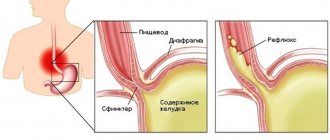Of course, talent and fame, but that’s not all they have in common. They all stuttered.
Stuttering is a complex speech disorder, manifested by a disorder of its normal rhythm, involuntary stops at the time of utterance or forced repetitions of individual sounds and syllables, which occurs due to convulsions of the articulation organs. In other words, stuttering is a violation of the rhythm and fluency of speech, causing difficulties in oral communication.
A healthy person pronounces 7-10 percent of his speech with interruptions - repeating individual words or phrases (sounds: uh, mm, or interjections). However, when interruptions in speech amount to more than 10 percent, this is already stuttering. While most people take speech for granted, people who stutter have incredible difficulty using spoken language in everyday life.
In different countries of the world, the percentage of people who stutter is not the same and depends on certain national characteristics, for example, on the characteristics of temperament, which to a certain extent determine such characteristics of the language as tempo, rhythm, pauses, and intonation. In Europe, the number of people who stutter decreases from west to east: among the French - 5.7%, among Germans - 2%, among Russians - 1.2%. Most often, stuttering occurs in children aged two to five years, and boys suffer from this speech defect 4 times more often than girls. It is very important not to miss the first signs of stuttering: the child’s speech is uncertain, unfluent, with frequent repetitions of words, is associated with visible tension and often frustrates him. Sometimes the baby suddenly becomes silent and refuses to speak at all. In this case, you need to urgently contact a speech therapist. Stuttering usually reaches its highest development in adolescence, and after 30 years it begins to weaken.
Any speech disorders , including stuttering, can best be corrected when treatment begins as early as possible. Currently, many methods of treating stuttering - from medications and acupuncture to special anti-stuttering devices and computer programs.
Classification of stuttering
The criteria for classifying seizures are the course of the disease, its forms and clinical manifestations. The following forms of stuttering are distinguished:
- clonic - short-term convulsions follow one after another, which leads to involuntary repetition of sounds;
- tonic - speech delay occurs due to strong and prolonged muscle contraction;
- mixed - occurs due to a combination of both types of speech impairment.
Along the way, stuttering can be permanent (it constantly bothers the patient in all situations and forms of speech), wave-like (it can appear and disappear), and recurrent (after complete disappearance it begins to bother the patient again). According to clinical forms, it is customary to distinguish neurotic and neurosis-like. The first occurs due to neuroses and stress, and the second due to diseases of the nervous system.
Clinical picture
Symptoms of stuttering are obvious in a person’s speech flow:
- When pronouncing the word “where” it may sound like this: “g... g... ... where.” Words starting with the letters "k", "g" and "t" can be difficult starting sounds.
- Prolonged pronunciation of a word. Repeating entire phrases or sentences.
Physical manifestations
When a person struggles to pronounce words: the head tilts back, the eyes rise up. Additionally included: rapid blinking of eyes, clenching of fists, sweating. The main symptom is muscle spasms of the speech apparatus (tonic and clonic), manifested in all its parts: respiratory, articulatory, vocal.
The dysfunction may be worse in certain social situations, such as speaking in front of a group of people or talking on the phone. Certain activities may reduce symptoms. These include singing, reading, or speaking in unison with others.
Etiology and pathogenesis
There is a whole range of causes and risk factors that can provoke this disease. Therefore, it is possible to determine the exact etiology of the disease only in each case. The causes of the disease in adults and children differ significantly.
Stuttering in adults is extremely rarely diagnosed. One of the risk factors for the disease is hereditary predisposition. Patients are diagnosed with weakness of the central parts of speech, which, under the influence of unfavorable factors, can cause stuttering. It has also been proven that pathology occurs much more often in men than in women. This is due to the fact that in women the left hemisphere of the brain, in which Broca’s motor center is localized, is more developed.
A common cause of stuttering in adults is severe stress. Under its influence, the coordination of the muscles responsible for the production of sounds is disrupted. Their contraction and relaxation become uncoordinated, resulting in seizures. Stuttering can also be caused by diseases of the central nervous system: meningitis, encephalitis, neuroinfections, traumatic brain injuries. Brain tumors and strokes also play a big role in the development of stuttering.
In children, the main causes of pathology are mental trauma and pathologies of the central nervous system. Children who have suffered any diseases affecting the nervous system are especially prone to stuttering. Such diseases include traumatic brain injuries, intrauterine hypoxia, and infectious diseases caused by viruses. Doctors also identify risk factors for developing the disease. If such factors are present in a child’s life, any disease of the central nervous system or stress can lead to the development of pathology.
Risk factors for stuttering in children:
- The child began to speak early. Some children who are just one year old may have an extensive vocabulary. However, most children normally speak only 3-5 words. Then the vocabulary begins to be replenished very quickly with new ones; a child at the age of 1.5 years already begins to speak in whole sentences. However, the baby’s lungs and speech apparatus are not yet able to cope with the increased load, which provokes stuttering.
- Late onset of speech. Typically, such children speak their first words when they are two years old. Children begin to pronounce extended phrases at about three years of age. In this case, stuttering becomes the cause of motor disinhibition of the nervous system.
- Emotionally labile nervous system. Such children are usually extremely tearful, have poor appetite and restless sleep. Any sudden change in environment can provoke illness in children: moving to a new city, starting to attend kindergarten, or a long absence from their mother.
- Strict child rearing. Some parents arrange their child’s life according to a clear schedule, and also often punish them for the slightest missteps. As a result, the child grows up tense and fearful, afraid of disappointing his parents.
- Physical health of the baby. If a child suffers from any chronic diseases or his parents constantly limit him in something, he withdraws into himself, becomes fearful and shy.
- Hereditary predisposition.
- Mastering several languages at once. If a child learns several languages at once, especially when the parents speak different languages, then he may experience a disruption in the coordinated functioning of the speech-motor centers.
Medicines
Photo: rethinkbreastcancer.com
The use of medications helps eliminate the symptoms of stuttering and also helps improve the psychological state of the child.
Among anxiolytics, a drug such as Tenoten for children has proven itself well. This is an anti-anxiety, sedative drug that is used in children with increased excitability and attention problems. The drug can be prescribed to children from 3 years of age. Helps improve the child's behavior, facilitates the process of adaptation in the children's team, does not cause drowsiness, lethargy or addiction.
Taking sedatives (sedatives) helps to cope with difficult stressful situations. Preference is given to drugs based on natural herbs in order to minimize the systemic effect of chemicals on the body, thereby reducing the risk of side effects. For example, a well-known drug based on valerian is valevigran. This drug is used for mental and physical stress, anxiety, which is accompanied by increased fatigue, inattention, and mild forms of sleep disturbance. It has a calming and mild hypnotic effect, does not cause addiction and does not inhibit psychomotor function.
Anticonvulsants include Epileptal. The purpose of this drug is aimed at eliminating spasms of the facial muscles of the face and hands, which are detected in a neurosis-like form of stuttering. Currently, the prescription of anticonvulsants is subject to criticism, since this group of drugs has a systemic effect on the body and can provoke many unpleasant side effects. Therefore, this drug is prescribed by a strictly qualified doctor in individual cases.
Physiological symptoms
The main external sign of the disease is the presence of convulsions during the speech act. The duration of seizures can vary from 0.2 seconds to 90 in the most severe cases. Convulsions are divided according to their form into tonic, clonic and mixed, according to frequency and localization into vocal, respiratory, articulatory and mixed.
When stuttering, patients are usually diagnosed with breathing problems. There are three forms of such violations:
- exciratory (characterized by convulsive exhalation);
- inspiratory (convulsive inhalation);
- respiratory (convulsive inhalation and exhalation).
Violations of speech and general motor skills (tics, speech spasms, myoclonus in the facial muscles) are considered noticeable symptoms of the disease. Patients who have difficulties with pronunciation begin to use various tricks to facilitate speech and hide its shortcomings.
Diagnosis
It is necessary to differentiate 3. with other disorders of the rhythm and tempo of speech (dyslalia, aphasia, etc.)
Symptomatically, aphthongia is close to 3. It is expressed in a prolonged tonic spasm of the tongue muscles, which occurs both during attempts to speak and during speech. In those suffering from aphthongia, a tense tongue either rests on certain parts of the oral cavity or protrudes from it. Speech then becomes impossible. There are no neurotic disorders. Many authors refer to aphthongia as an independent type of speech pathology.
Psychological symptoms
The main psychological manifestation of the disease is a feeling of inferiority. The more the patient concentrates on his defect, the more it worsens. There are three degrees of fixation of the patient’s attention on his disease, which differ in the severity of psychological symptoms.
- It is typical for a zero degree of fixation that children do not notice their defect or do not experience disadvantage because of it. In this case, there are no attempts to eliminate the defect, the patient does not feel resentment or embarrassment due to stuttering.
- A moderate degree of fixation is observed in older schoolchildren who are embarrassed by the defect and also try in every possible way to hide it.
- With a pronounced degree of fixation, the child suffers from a feeling of inferiority, concentrates on his own problem and is afraid to communicate with other people.
What should adults say?
To prevent relapses of speech disorders (and they may well occur), you as parents need to change or carefully monitor your own speech. This applies to your conversations with each other. Children actively perceive the conversation around them and unconsciously imitate it:
- Speak clearly, intelligibly, without mistakes and without rushing.
- Try to pronounce the phrase a little slower than usual.
- Avoid complex words that are incomprehensible to the baby.
- Various “scary” topics of conversation are taboo.
- It is not recommended to speak in syllables or sing phrases.
Try to get your baby to make friends with balanced children who have well-developed speech. If his speech activity is too high, artificially limit it by giving him the opportunity to silently play alone with himself for some time. Try to get your child to listen more than talk.
Diagnosis of stuttering
To make a diagnosis, the doctor pays attention to the presence of the following main signs of the disease in the patient: hesitation and difficulties during the pronunciation of words, disturbances in the rhythm of speech, which is manifested by repetition of syllables, fragments of words, prolongation of sounds, as well as attempts to eliminate stuttering with the help of tics or grimaces. Diagnosis of the disease is carried out by a speech therapist and a neurologist. The doctor may also need to exclude organic diseases of the nervous system, which involves conducting an MRI and EEG of the brain, as well as rheoencephalography.
Role of the family
Family is the first and main environment for children. Close people can become a pathogenic organism that provokes the prosperity of the disease, but, on the other hand, have a beneficial effect on eliminating the defect.
A large role in the formation of logoclonia is played by the educational model. The risk of developing pathology increases in those families where the baby is raised in an environment of authoritarianism, hypersocialization, and increased emotional connection with the mother. The child is not perceived as he is, the right to develop as an individual is taken away, and his rights are infringed upon. Parents do not have an adequate understanding of the baby and his role in society. There is no attention to age needs.
The atmosphere in the family is another provoking factor for logoneurosis. Scandals, showdowns, misunderstandings between parents act as a chronic stressor. Particular importance is given to violence and dictatorship in a family environment. When faced with the problem of logoneurosis, many parents subconsciously choose the wrong path of response. The first reaction is resistance, rejection of the disease, the desire to get rid of the defect as quickly as possible.
Relatives who are little informed about the disease make fatal mistakes in teaching their children. They show increased control, anxiety, and force the baby to repeat phrases several times. The anxiety of loved ones is transmitted to the patient. In such a situation, the defect worsens. The mother's negative attitude towards the disease provokes increased attention to the speech defects of young patients, increasing sensitivity to the problem.
An examination of parents whose children suffer from logoneurosis revealed the following deviations in the mental state of adults, and, above all, the mother: guilt, anxiety, confusion, hopelessness, worry about the future of the baby. Futile attempts to eliminate the disease disorganize the family. Therefore, parents should pay attention to their condition, which is reflected in the psychological background of the little patient.
Based on the data obtained during conversations with mothers of sick children, it was possible to identify the following models of attitude towards the problem:
- an obstacle that needs to be overcome - we tried everything, this is the last hope;
- undeserved punishment, retribution for sins - why do we need this;
- a disease that needs treatment - he is sick because he is weak;
- tarnished reputation - where does this come from in our educated, wonderful family;
- manifestation of a difficult character - grimacing from harmfulness;
- absence of a problem - different things happen, and so it will pass.
All of these positions are destructive in relation to progress in the treatment of logoneurosis. Considering that children in most cases imitate the reactions of adults, it is hardly worth expecting an adequate assessment from the patient himself, and therefore a positive trend in the treatment of logoclonia.
The only correct response to a problem is to unite the family team. WITH
It is necessary to create a favorable atmosphere in the family for children, adequate participation in treatment without overprotection, but with support.
Parents must remember that their behavior has a powerful impact on the potential of their child.
Complications of stuttering
Stuttering is accompanied by various complications. A child who stutters begins to avoid speech situations, as a result of which his social circle narrows. As a result, he becomes suspicious, wary, shy, and acutely feels the difference between himself and his peers. In suspicious children, the feeling of their own inferiority gradually worsens.
As the child grows up, he becomes fearful and irritable, which depresses the psyche and thereby further aggravates the disease. Problems with social adaptation inevitably lead to deterioration in school performance. Frequent complications of stuttering are fear of speech (logophobia) and fear of pronouncing certain sounds (audiophobia).
Phases of pathology development
Phase I
Stuttering with short episodes, shortening the period of smooth speech regularity. Characterized by the following symptoms:
- Difficulty in pronunciation at the beginning of a word and when constructing a sentence.
- Stumbling in speech occurs in the pronunciation of short parts of speech, conjunctions and particles.
- Stuttering occurs as a result of “Communicative pressure” (excitement, a person is in a hurry to say something, etc.).
- There is no speech phobia observed.
II phase
- A chronic form of pathology appears.
- Pronunciation is difficult when speaking quickly and in complex word combinations.
- Awareness of a speech defect, but this does not interfere with normal communication.
III phase
- Obvious convulsive syndrome. But the person does not yet perceive this as a problem.
- Some sounds and syllables cannot be pronounced.
- Speech inhibition, as attempts begin to replace some words with others that are less problematic.
IV phase
- Stuttering develops into a major personal problem. The person understands that he has serious speech impairments and avoids contacts and difficult situations where communication is required. If at earlier stages words and expressions sometimes changed, now this happens all the time.
- Anticipation - a person waits for his speech errors.
- Chronic problem in pronouncing words. Development of fear of communication.
Treatment for stuttering
A speech therapist will help the patient eliminate the speech defect. However, if seizures occur due to damage to the central nervous system, a neurologist should treat the pathology. A psychologist will help you get rid of stuttering caused by a traumatic situation. The basis of treatment for stuttering is the restoration of normal functioning of the speech circle, especially the inhibition of Broca's center.
Treatment for stuttering includes a whole range of techniques:
- drug therapy;
- acupuncture;
- performing speech therapy exercises;
- breathing exercises;
- hypnosis and others.
All these techniques are aimed at solving different problems. In particular, hypnosis allows us to identify the underlying causes of pathology. However, this method is not used to treat children.
There are no special medications to treat stuttering. Drug therapy is usually prescribed only as an adjunctive treatment. The patient may be prescribed the following groups of drugs: tranquilizers, nootropic medications, sedatives, anticonvulsants and homeopathic tablets.
Acupressure massage has shown its effectiveness in getting rid of stuttering. It is used as a calming method.
Breathing exercises involve the formation of normal speech breathing. The child learns to take a correct, extended breath, which allows him to stock up on enough air to pronounce a long phrase. Logorhythmic exercises, which include singing, muscle relaxation, articulation exercises, and breathing exercises, will help compensate for speech defects.
The help of parents plays a huge role in the treatment of the disease. Parents need to be patient and try to follow the following recommendations that will help the baby get rid of the speech impediment:
- Correct communication. You need to try to talk to your child calmly, smoothly, slowly, and pronounce all the words clearly. It is advisable to ask your child questions to which he can give a simple answer.
- Daily regime. A good night's sleep (at least 8 hours), as well as avoiding computer and active games in the evening, will help the child cope with the disease.
- Proper nutrition. Parents should monitor their child's diet. It should be dominated by dairy and plant foods. It is necessary to limit sweets, salty, fried and spicy foods.
- Maintain safe speech patterns. In the early stages of treatment, parents should give the child only books that are familiar to him, and not ask him to retell what he has read or learn poems. It is better to leave all these activities for a later date.
It is much more difficult for adult patients to get rid of the disease than for children. It will require painstaking work and strict adherence to all doctor’s recommendations. The patient should regularly perform speech therapy exercises, keep a diary of his speeches, and also try to take the initiative in communication more often in order to get rid of fear and feelings of inferiority due to his speech impediment.
Medical history
Stuttering has several related names. It can be found within the framework of such concepts as logoneurosis and laloneurosis, logoclonia, balbucio, as well as battarism named after King Batta, who also suffered from this defect.
On the planet, logoneurosis is observed in 1% of the adult population and 3% of children. Typically, the disease manifests itself in childhood, between 2 and 5 years, when speech begins to develop. Being, so to speak, in a raw, unripe form, it is quite vulnerable and is subject to distortion in the event of any malfunction in the functioning of the nervous system.
The disorder has been known since ancient times. The prophet Moses and the pharaohs of Egypt had such a defect. One of the most famous individuals with logoclonia was Demosthenes, who nevertheless became a famous orator in Ancient Greece. His story is interesting because of how he tried to cope with his shortcomings, what unique techniques the philosopher used to do this. The most popular is pronouncing phrases with stones in the mouth. Along with this, Demosthenes also resorted to reading against the background of the sound of sea waves, pronouncing words mentally, in his mind. Another unconventional method of combating the disease that Demosthenes used was to listen to silence while sitting in a cave. The methods invented by the philosopher to eliminate stuttering turned out to be truly effective, since they turned him into an outstanding speaker.
From ancient times until the 20th century, the disorder was surrounded by a shadow of mystery. Doctors of various specialties tried to unravel his secret, but everything turned out to be in vain. Stuttering was attributed the status of a mysterious illness and was considered the result of damage to the speech organs. They tried to fight it with the help of herbs, spells, assault and even bloody operations in the oral cavity, but this did not bring visible improvements.
At the end of the 19th century there was a revolutionary revolution in understanding the nature of logoneurosis. It was carried out by the Russian psychiatrist I.A. Sikorsky. He came up with the idea that logoclonia originates in childhood at the time of the formation of speech activity. Pathologies of the nervous system and hereditary factors contribute to its occurrence. Sikorsky connected the concept of stuttering with neurosis.
Tartakovsky I.I. made an invaluable contribution to the development of the theory of the disorder. He came up with the idea of treating the disease. In particular, he proved the effectiveness of individual and group psychotherapy in the treatment of illness.
A separate branch, speech therapy, was formed already in the 20th century, and to this day it deals with problems of speech activity.
Prognosis for stuttering
It is quite difficult to predict the outcome of the disease, since a variety of factors can provoke it. Not all of them can be easily and quickly eliminated. In many ways, the prognosis of stuttering depends on its form and the age of the patient. It has been proven that the younger the patient, the greater his chances of a full recovery. However, children who become ill due to congenital characteristics of the speech apparatus still have a low chance of recovery.
The type of course also influences the outcome of the disease. In particular, respiratory spasms are relatively easy to treat, and clonic forms of the disease pass faster than tonic ones. The most favorable age for treatment of pathology is considered to be 3-5 years. It is most difficult for children aged 12 to 17 to get rid of stuttering. Speech therapy has also recorded cases of relapse of the disease when exposed to unfavorable factors.
Prevention of stuttering
In speech therapy, it is customary to distinguish two groups of methods for preventing the disease: strengthening the child’s immunity and organizing his speech development. To maintain and strengthen the baby’s health, it is extremely important to follow a daily routine, good nutrition, physical activity, and proper hygiene. In order for the nervous system to function correctly, it is necessary to protect it from unnecessary overload and monitor normal sleep and wakefulness.
The child’s speech development should be aimed at expanding his horizons, ideas about objects and phenomena surrounding him. It is also important that the child learns the correct pronunciation of sounds, the tempo of speech and its rhythm. You can also avoid stuttering by preventing speech hesitations and teaching your child to speak smoothly and express his thoughts logically.
What should parents do at home?
It is ineffective to cure logoneurosis without the help of parents at home, since the main support should come from them. Therefore, get ready for the fact that you will also have to contact a psychologist and learn from him. To correct psychological problems in a child, you need to change your daily routine and lifestyle at home. The best way to prevent stuttering is to avoid situations that make it worse.
Mode
Organize your daily routine so that periods of intellectual and emotional stress alternate with proper rest and relaxation.
Dream
Children must sleep at least 8 hours a day, so you need to organize your daily life, home space, and sound atmosphere in such a way as to ensure this minimum.
Intonation
The baby should feel the confidence and calmness coming from the parents, so you need to address him slowly, quietly, calmly, without interrupting him. It is important to explain to loved ones that this is exactly what needs to be done.
Praise
Develop your baby's self-confidence by praising him for any success. Create situations in which he could show his best side. However, praise for success should not be confused with pampering.
Situation
In family relationships, quarrels should remain prohibited. It is impossible to cure a child and prevent stuttering in an aggressive and tense atmosphere. The same applies to visiting noisy companies or places.
Leisure
Limit watching programs, movies, cartoons or games that cause emotional overstimulation. Leisure should be calm, aimed at developing creative abilities.
Communication
Gradually and delicately expand your child's social circle by inviting him to visit public places that do not evoke strong emotions. Introduce him to interesting people. They will help him adapt to the outside world.
Activity
Dosed physical activity has a positive effect on the nervous system, as well as muscle development. Therefore, physical education, swimming, running, just walking, playing in the fresh air should become the norm.
Restrictions
Under no circumstances use punishments that can have a negative impact on children's emotions (punishments should also be calm, no matter what offense the child commits). It is strictly forbidden to leave a child alone in a dark room.











